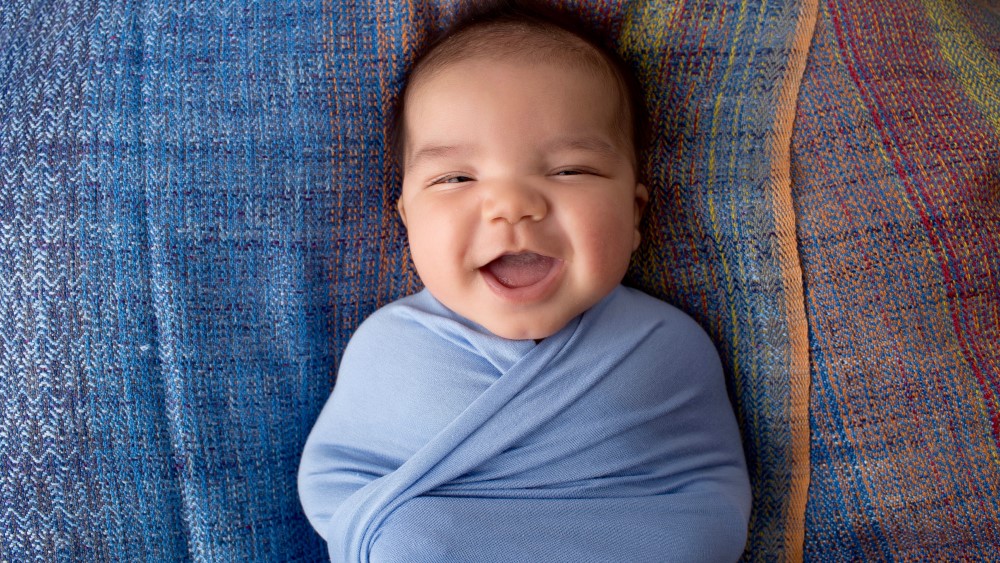Wes's story: A chilly start leads to a brighter outcome

For the first three days of his life, Weston Joujoute had a chilly start – literally. At 39 weeks, his mother, Kiera, went to her doctor’s office because Weston was not moving as much. Kiera was rushed to the operating room for an emergency C-section. Her placenta had stopped working and Weston was not getting the oxygen he needed.
After Weston arrived, doctors learned that he wasn’t breathing and they were not sure how long his brain had been without oxygen. Weston was transferred to the Neonatal Intensive Care Unit (NICU) at MassGeneral for Children (MGfC) where the care team started therapeutic hypothermia, or cooling. He was put on a ventilator, doctors placed EEG leads on his scalp to monitor his brain activity and his tiny body was cooled to 91°F for three days to prevent as much brain damage as possible. Kiera and her husband, Jude, of Southborough, Mass., wouldn’t know more information until their son had an MRI after he was taken off the cooling treatment.

“With hypothermia treatment, the idea is to minimize damage to the surrounding area where other brain cells have been injured,” said Kate Sparger, MD, a physician in the NICU who cared for Weston. “The cooling treatment has the potential to preserve and protect Wes’s developing brain.”
After three days, Weston was taken off the cooling treatment and taken to Pediatric Imaging for an MRI of his brain. “The MRI was sort of the key to our next steps with Weston,” said Kiera. “I was preparing for the worst and hoping for the best. The doctors weren’t sure if he had brain damage at that point, and if he did, they weren’t sure of his outcome.”
To everyone’s relief, the MRI came back clear with no evidence of brain damage and his neurologic exam was reassuring. “Call it a miracle, call it modern medicine,” said Kiera. “Whatever it was, we were all completely shocked.”
Even with the hope from his MRI results, Weston had a long road to recovery. Emily Firn, MS, OTR/L, an inpatient occupational therapist, partnered with his parents to provide tips and exercises to relieve the stiffness and swelling in his limbs. Babies who have been through hypothermia treatment, like Weston, are often sedated and do not have the chance to use their muscles and move as much as other babies during those first critical days. Sometimes, they are very sensitive as they wean off their sedating medication. Occupational therapy, which evaluates and supports infant movement, sensory and feeding skills after hypothermia treatment, for example, helps loosen and strengthen muscles while providing families and babies with the opportunity to bond.
“As occupational therapists, we help families find ways to interact and bond with their babies in nurturing ways through supportive touch and calming activities,” said Firn. “With Weston, not only did we work on ways to decrease the swelling in his limbs and increase his range of motion, but we also supported Weston with the skills needed for breastfeeding. Kiera told us that breastfeeding was important to her as a mom, and even though Weston was fragile, mom and baby made great progress with breastfeeding during his hospital stay. Weston is a prime example of the miracle that is today’s medicine and an example of how pairing with families to work on what is most important to them leads to the best outcomes.”
Now, Weston is a giggly, bubbly baby who never stops smiling. Since being discharged from his 59-day hospital stay, he is meeting all of his developmental milestones and loves playing with his older siblings.
“Despite his rocky start to life, Weston never had seizures and had a normal brain MRI, two things we know can predict better outcomes,” said Amy Armstrong-Javors, MD, a resident in Pediatric Neurology who helped care for Weston. “It’s the best part of my job to watch babies like Weston grow and develop into healthy, happy kids.”
Appointments and Referrals
Request an appointment or second opinion, refer a patient, find a doctor or view test results with MGfC's secure online services.
